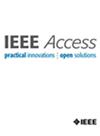Evolutionary Synthesis of High-Capacity Reconfigurable Multilayer Road Networks Using a Multiagent Hybrid Clustering-Assisted Genetic Algorithm
IF 3.4
3区 计算机科学
Q2 COMPUTER SCIENCE, INFORMATION SYSTEMS
引用次数: 0
Abstract
Modern requirements for urban traffic management and control call for the design of high-capacity reconfigurable multilayer road networks (RMRNs). This paper discusses the proposed evolutionary synthesis approach, a promising method for finding the best configurations of RMRNs, aiming to create road networks with optimized layouts that maximize vehicle outflow. As the complexity of RMRNs increases, due to the addition of overpasses and tunnels, the expenses for building these road networks also rise significantly. Therefore, it is essential to find a balance when choosing the optimal topological solution for an RMRN. These solutions need to maximize traffic flow while minimizing the complexity of the RMRN. To achieve this goal, a new multiagent hybrid clustering-assisted genetic algorithm (MA-HCAGA). The proposed algorithm combines the use of binary-coded crossovers and mutations as genetic operators, and biobjective discrete particle swarm optimization (BODPSO) techniques to improve the evolutionary search process. In addition, the algorithm combines the use of finite-state machines (FSMs) to control the transitions between the states of agent-processes and the fuzzy clustering technique (FCA) to estimate the swarm and select clusters for interaction among the groups of agent-processes and particle swarms. The superior performance of the MA-HCAGA algorithm in evolutionary synthesis of RMRNs has been demonstrated through comparisons with other well-known multiobjective optimization methods. MA-HCAGA has been successfully applied in the evolutionary synthesis of RMRNs, allowing a decision maker to select the optimal RMRN topologies along the approximate Pareto front by selecting specific solutions. A traffic flow simulation model, aggregated with the MA-HCAGA algorithm, has been developed to simulate vehicle flow at various configurations of RMRNs. The results of this study show the effectiveness of the proposed method for configuring RMRNs in order to optimize vehicle outflow and reduce the complexity of RMRNs.求助全文
约1分钟内获得全文
求助全文
来源期刊

IEEE Access
COMPUTER SCIENCE, INFORMATION SYSTEMSENGIN-ENGINEERING, ELECTRICAL & ELECTRONIC
CiteScore
9.80
自引率
7.70%
发文量
6673
审稿时长
6 weeks
期刊介绍:
IEEE Access® is a multidisciplinary, open access (OA), applications-oriented, all-electronic archival journal that continuously presents the results of original research or development across all of IEEE''s fields of interest.
IEEE Access will publish articles that are of high interest to readers, original, technically correct, and clearly presented. Supported by author publication charges (APC), its hallmarks are a rapid peer review and publication process with open access to all readers. Unlike IEEE''s traditional Transactions or Journals, reviews are "binary", in that reviewers will either Accept or Reject an article in the form it is submitted in order to achieve rapid turnaround. Especially encouraged are submissions on:
Multidisciplinary topics, or applications-oriented articles and negative results that do not fit within the scope of IEEE''s traditional journals.
Practical articles discussing new experiments or measurement techniques, interesting solutions to engineering.
Development of new or improved fabrication or manufacturing techniques.
Reviews or survey articles of new or evolving fields oriented to assist others in understanding the new area.
 求助内容:
求助内容: 应助结果提醒方式:
应助结果提醒方式:


